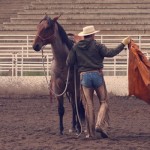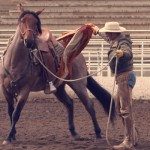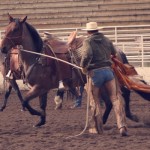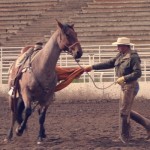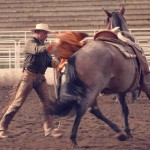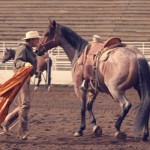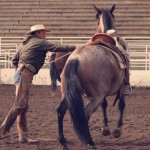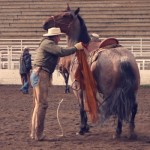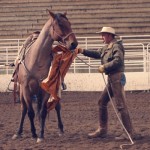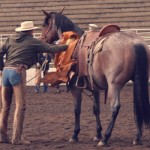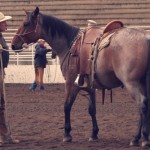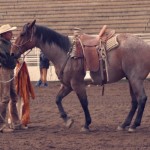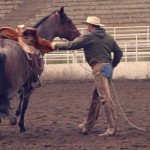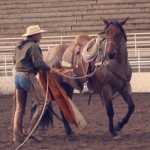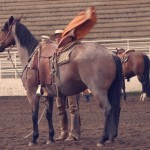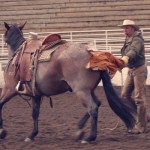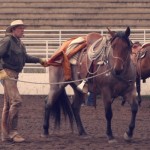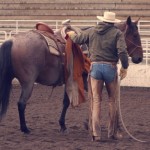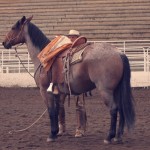So much of groundwork is not only about preparing your horse, but helping you to be able to see when things don’t look right before you get on. If you can see the trouble and work through it, you can stay safer.
If it’s summer and it’s 90 degrees by 9 o’clock in the morning, many of you get by on horses that aren’t very well started. But in the fall, when it’s frosty in the morning and they’ve been shivering in the night, if you think you’re just going to saddle up and trot off into the sunset, it’s those kind of mornings that you might get bucked off.
I would like my horse to have no reaction when I toss my slicker up on the saddle. Someday I might need to tie my coat behind my saddle and I would like to be able to walk up and do that with no reaction on his part I want him to be gentle.
But first I have to pay my dues so he knows this slicker is not going to hurt him.
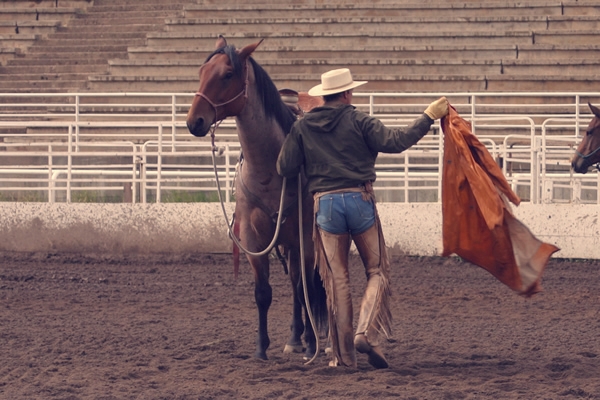
Photo 1
This slicker is no different than my flag. He might becomfortable with the flag and still need exposure to this.
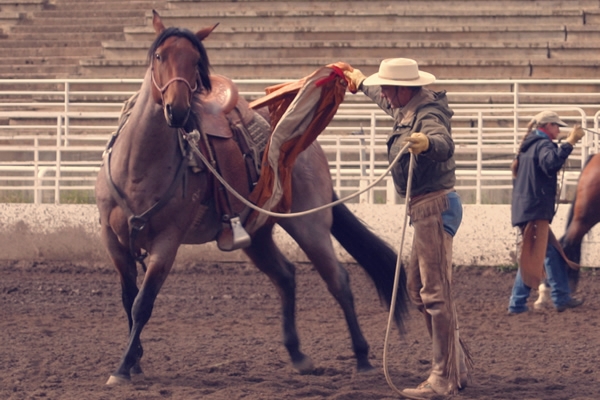
Photo 2
He has to be comfortable with the slicker while his feet are moving, so I’ll use it to move him out.
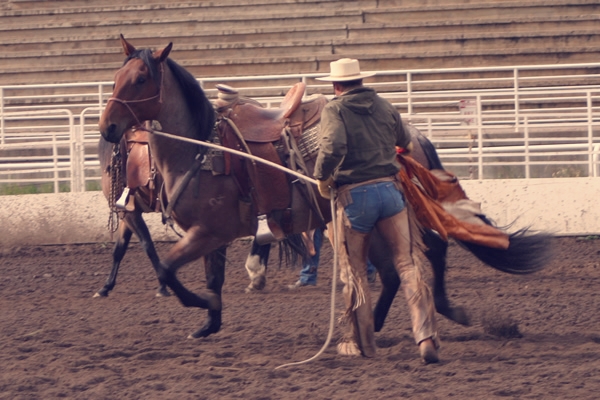
Photo 3
As he moves around me, I’m mindful of his form. If he takes his head to the outside of the circle...

Photo 4
I will bump with my lead rope so that his nose is tipped to the inside of the circle.
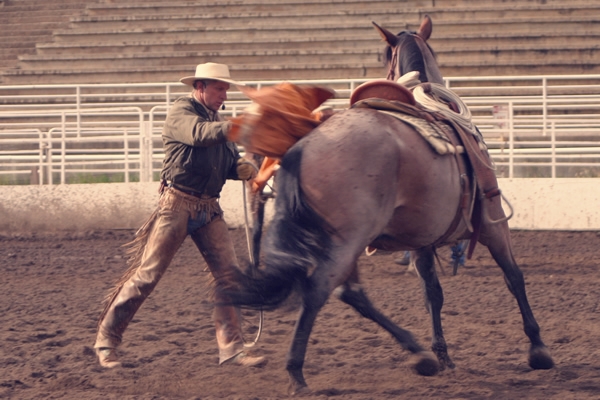
Photo 5
If, when I toss the slicker there is any concern on his part, I will bend him and let his hindquarters work.
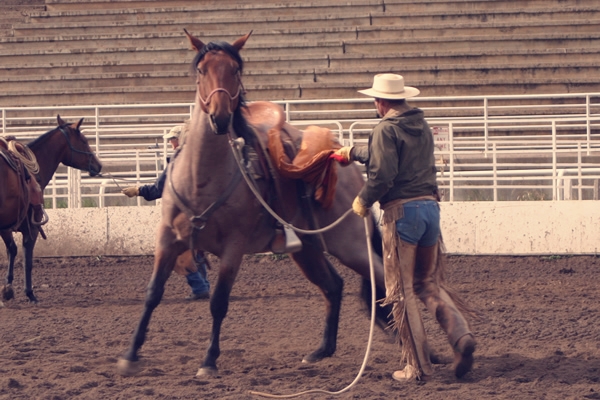
Photo 6
He can stand whenever he wants. I want to be careless with the slicker; I don’t want to have to sneak around.
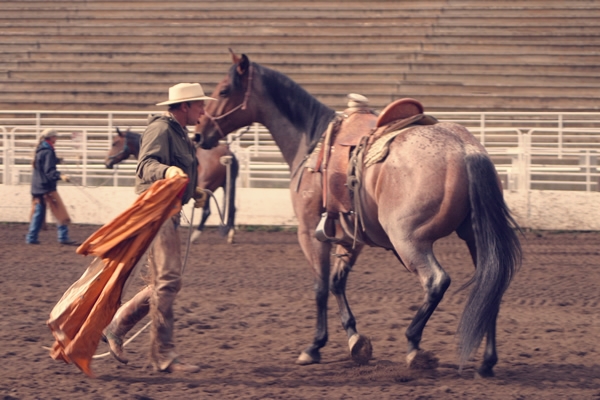
Photo 7
I won’t make him stand, but I will bend him and sort of “slip the clutch” as he travels around me.
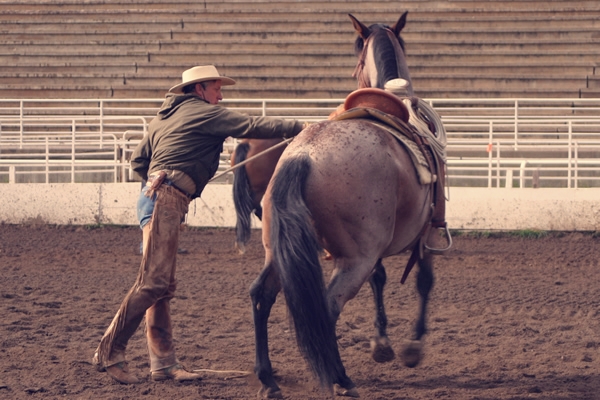
Photo 8
He is thinking that this slicker is going to hurt him, but pretty soon he will realize that it is not.

Photo 9
If he tries to push forward, I will use the angle of my lead rope toward his hip so he steps over behind.
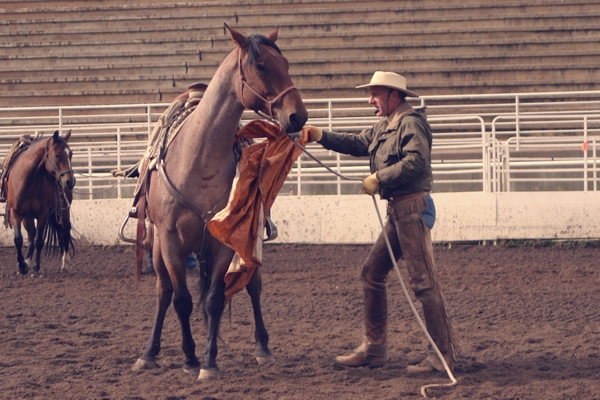
Photo 10
He is pretty used to the flag, so I can come in here at his shoulder while keeping his hindquarters working.
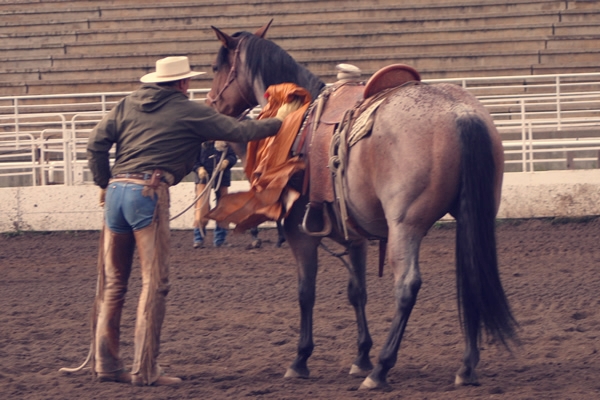
Photo 11
When he chooses to stand, I will let him. And I will rub him with the slicker in a soothing way.
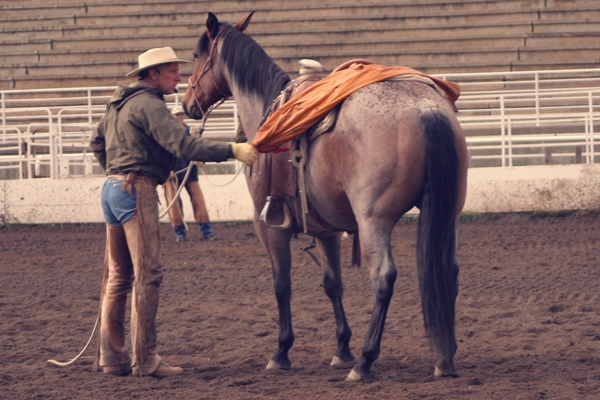
Photo 12
Once he is standing, I might toss the slicker up like I would to tie it on to my saddle for the day.
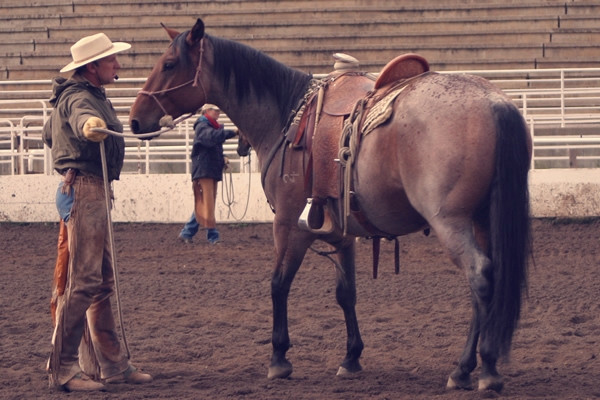
Photo 13
If I want to work the other side, I just tip his nose across in front of me with my leading hand.
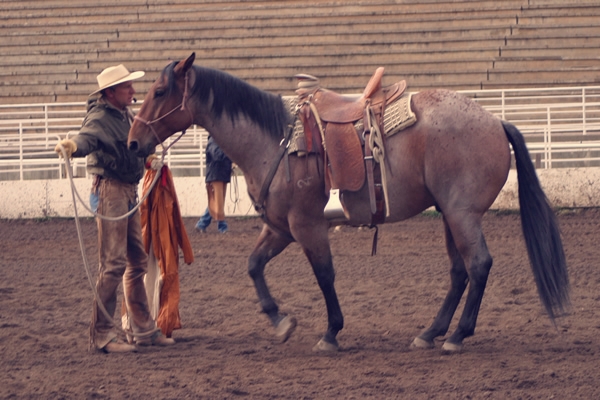
Photo 14
I let him move his feet to put me on his other side, rather than me walking to his right side.
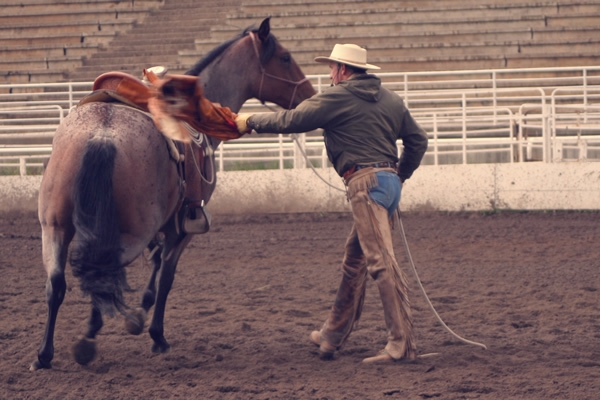
Photo 15
I want him to be comfortable with the slicker while his feet are in motion, just like he’d be if I were riding in it.
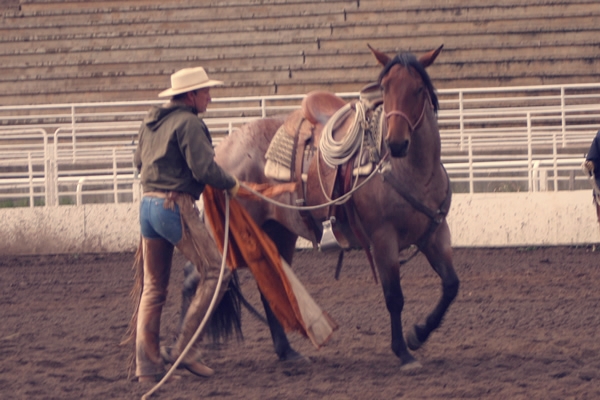
Photo 16
If he is worried, I will bend him and let his hindquarters work, making it difficult for him to just race around me.
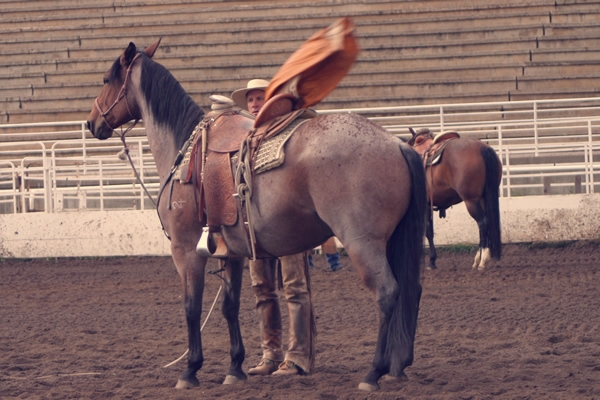
Photo 17
He chooses to stop, which is good. He is feeling better about the slicker moving around him.
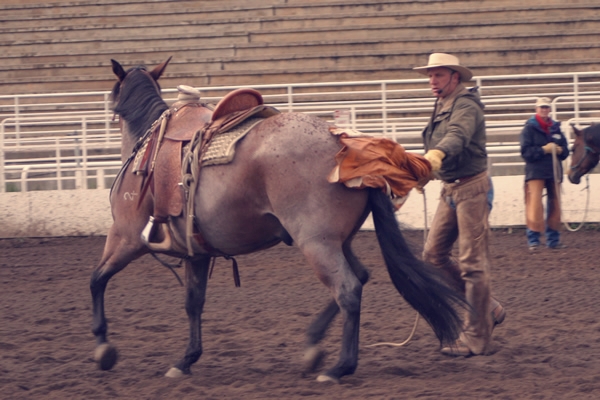
Photo 18
Now I’ll use the slicker to ask him to go. This time he leaves a little more softly.
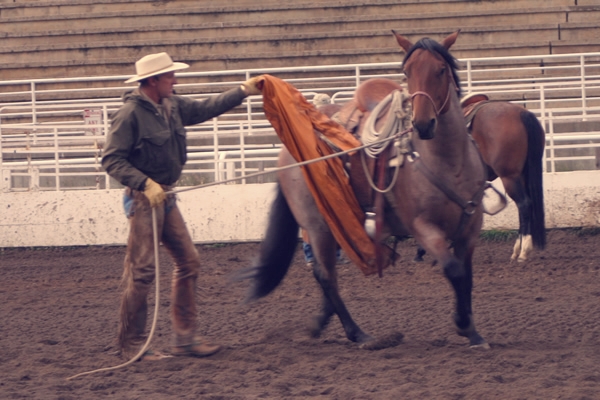
Photo 19
This is the separation that they need to learn with the lead rope, the flag, the slicker. Once he says I think I can...

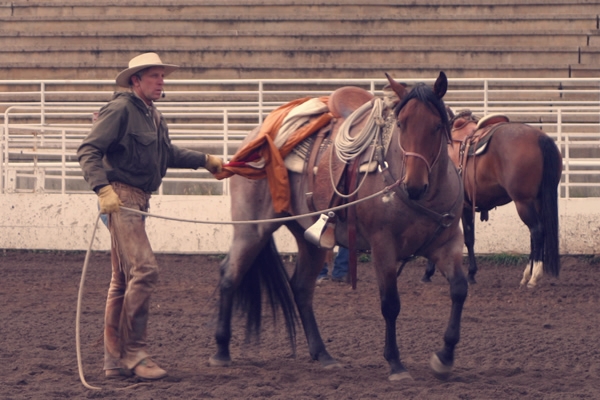
Photo 20
tolerate you throwing that all over, then he needs to be able to move away from it when you ask.
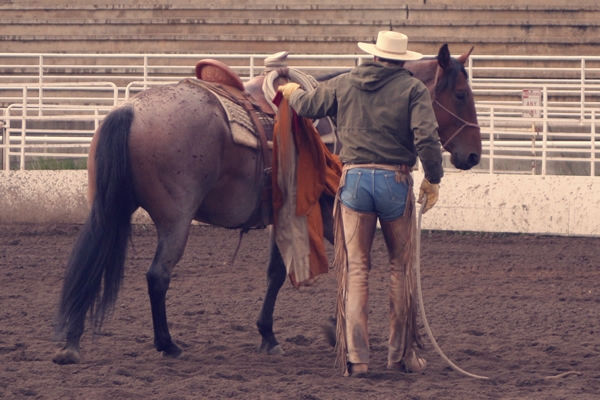
Photo 21
I’m really careful by his shoulder. A troubled horse might jump by and kick you. Make sure your flag work is solid first.
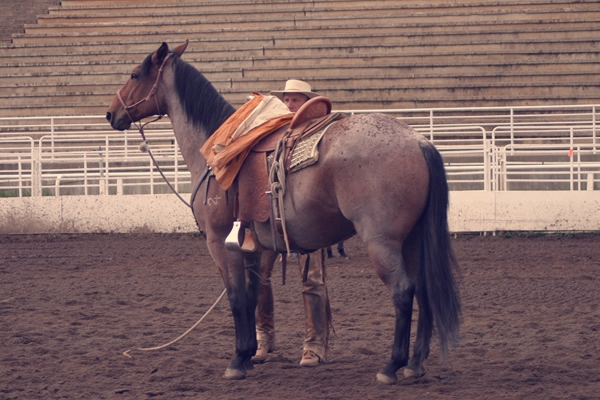
Photo 22
With more time spent on these basics, there will be no reaction at all when I toss my slicker up on the saddle.



